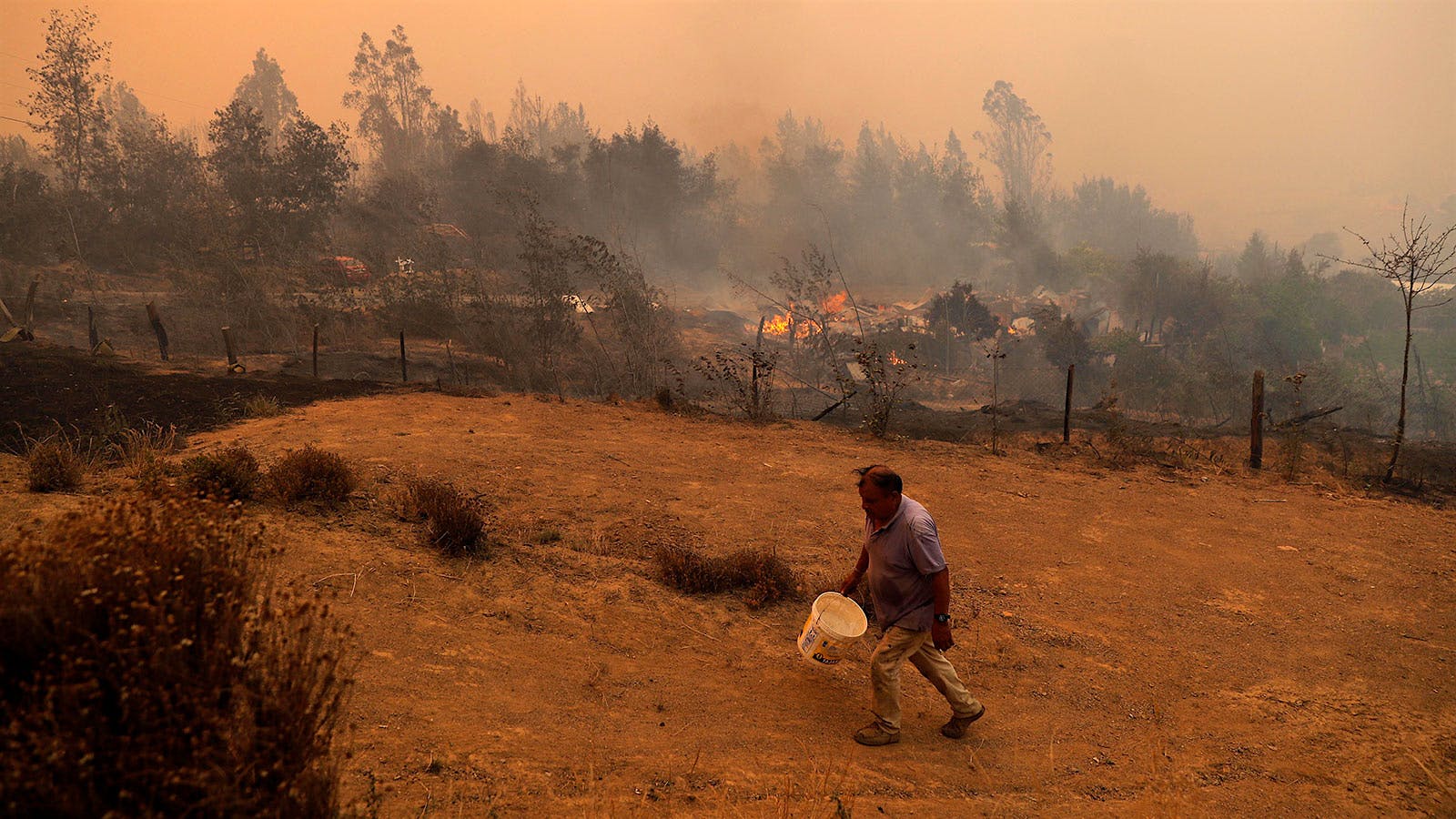Products You May Like
A state of emergency was declared in southern Chile’s bucolic Ñuble and BioBio regions this morning as wildfires rage out of control, worsened by strong winds. The blazes broke out in Concepcion province after a record heatwave. At least four people are dead. The National Service for Disaster Prevention and Response reported 39 separate fires are currently burning. However, authorities have not provided containment figures for the blazes, which have already consumed nearly 20,000 acres.
The areas under siege are home to a small but important piece of the Chilean wine industry. Many of its vintners tend century-old Carignan and Pais vines. There are more than 500 years of winegrowing history here, with the first vines planted around 1550. Pais, also known as Listán Prieto or Misión, is the variety known as Mission in California, originally planted in Chile by Spanish conquistadors.
“It’s an instrumental area for preserving Chile’s tradition, culture, and distinctive wines,” Julio Alonso, executive director for Wines of Chile, told Wine Spectator. “The average vineyard size is just over five acres. Usually planted to old vines, organically farmed, plowed by horse, and handpicked. For example, Le Leona harbors a Pais vine dating back to 1798.”
Sebastian De Martino of Maipo-based De Martino, who owns a vineyard in Guarilihue, Itata, said the area has been badly impacted and is still burning. “The fires went right next to our vineyard but [it] didn’t get burned,” he said, noting that some nearby friends’ vineyards did sustain damage. “We’re still uncertain about the impact as the situation is still happening.”
![Chile wildfires]](https://mshanken.imgix.net/wso/bolt/2023-02/ns_vine020323_1600.jpg?auto=compress,format,&sharp=5&vib=20&q=70&w=320 320w,https://mshanken.imgix.net/wso/bolt/2023-02/ns_vine020323_1600.jpg?auto=compress,format,&sharp=5&vib=20&q=70&w=320 640w,https://mshanken.imgix.net/wso/bolt/2023-02/ns_vine020323_1600.jpg?auto=compress,format,&sharp=5&vib=20&q=70&w=384 768w,https://mshanken.imgix.net/wso/bolt/2023-02/ns_vine020323_1600.jpg?auto=compress,format,&sharp=5&vib=20&q=70&w=828 828w)
The timing of the fires is unfortunate—harvest is rapidly approaching. The areas’ typical Mediterranean-type climate often has more abundant rainfall compared to other noteworthy wine regions in Chile, such as Maipo and Colchagua. But drought conditions and a recent heatwave made the rural region vulnerable. The heat is projected to last through the weekend, with strong winds continuing to raise the risk of fast-spreading fires.
Stay on top of important wine stories with Wine Spectator’s free Breaking News Alerts.
